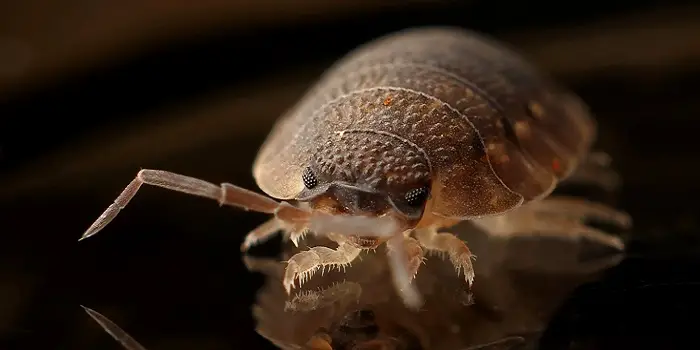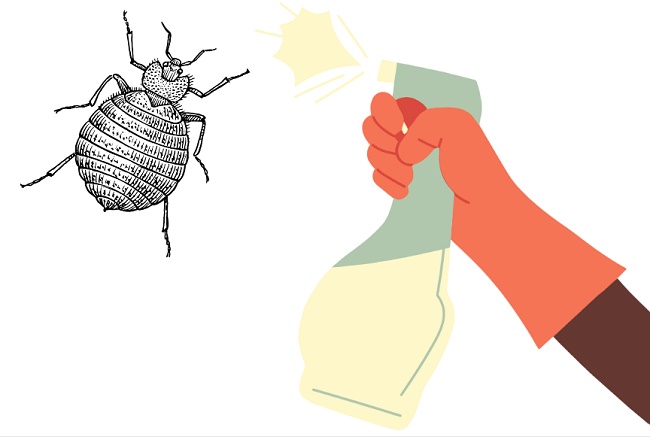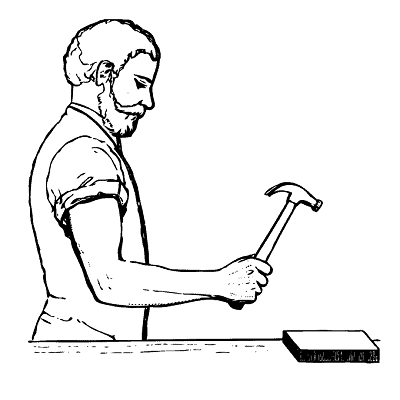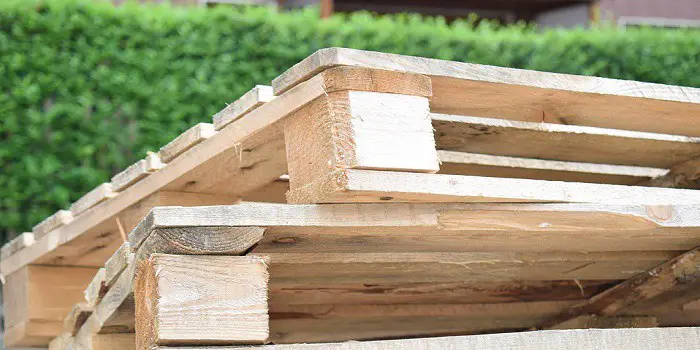
Bed bugs—those tiny freeloaders—are every homeowner’s nightmare. If these pesky critters have invaded your space, eviction is non-negotiable.
One surefire way to kill and get rid of these bugs is by steaming them and their eggs at a scorching 212°F (100°C). At that temperature, they won’t just check out—they’ll be gone for good.
Other than this, you can use decorative cedar chips and cedar wood for construction or natural oils such as cedar oil that can repel these bugs away. This awesome property of cedar simply means you can use the wood in areas from where you want it to stay away.
Not only for building items for indoor use (like beds, chairs, wooden chests, musical instruments, furniture, etc.), but you can also use cedar wood for doors, door frames, siding, pergolas, shade screens, landscaping, raised garden beds, and outdoor stairs.
Why Do Bugs Hate Cedar?
The reason why cedar wood repels bed bugs, cockroaches, fleas, moths, ticks, termites, spiders, beetles, and certain ants is its natural oil, chemical, and distinct smell that they cannot tolerate.
Cedar oil (aka cedarwood oil) is the woodsy-scented essential oil extracted from conifers like cedar, pine, and juniper. It’s mainly derived from foliage but can also come from leftover wood, roots, and stumps after logging.
Its distinct aroma isn’t just for show, it works alongside the oil’s suffocating and chemical-disrupting effects to send pests packing.
But let’s be real – Cedar doesn’t kill bed bugs.
While cedarwood oil is quite the multitasker—pest control included—it’s more of a bug-blocker than a bug-exterminator.
What this means is a little spritz of cedar oil can help keep bed bugs from reclaiming your mattress and pillows while you sleep. But unlike popular belief, the oil will not leave any kind of residue that can continue killing the insects after the application.
So, while it might send bed bugs packing from freshly sprayed areas, it won’t evict the ones hiding deep in your furniture cracks and crevices. Basically, they’ll dodge the cedar-scented zones and set up camp elsewhere—like uninvited guests who just won’t leave.
How Does Cedar Wood Repel Bugs?
Woodworkers often love using cedar for outdoor furniture, knowing it’ll help keep unwanted creepy crawlies at bay.
So, how does cedar pull off this bug-repelling magic? It works in three key ways:
- Releasing chemicals that insects despise
- Releasing cedar oil, which messes with their systems
- Releasing a strong aroma, making your furniture smell great (to you) but terrible (to bugs)
The real star of the show is Thujone—a neurotoxic compound that damages insect nervous systems and acts as a powerful antimicrobial agent. It’s what gives cedar its natural bug resistance, setting it apart from other woods.
Meanwhile, cedar oil does double duty—not only does it repel bugs, but it also works as a natural insecticide and helps waterproof the wood. Remember, we talked about multitasking.

How to Use Cedarwood Oil for Bed Bugs?
Stopping bugs naturally using cedarwood oil starts with identifying the infestation correctly – which means you need to identify the insects accurately.
The most common signs you can use to identify bed bugs in your home include dark red stains on your bedsheets and a kind of yellow skin leftover from larvae.
Sometimes you can also notice and identify live bed bugs that are usually the size of an apple seed. They can easily be seen around cracks and crevices of your bed frame when you shine a flashlight near them.
Another good way to tell if you have bed bug infestation is through bed bug bites.
Since these bugs will require human or pet flesh to survive and will mostly become active when you sleep bites from bed bugs can be found on your exposed skin, like hands, neck, legs, and arms, which are usually in a straight line or a zigzag pattern and feels itchy.
Once you know precisely you have bed bugs, you can use DIY cedarwood oil sprays to treat them naturally.
Simply create the one using the below methods and active ingredients…
1- Surface Bed Bug Spray
One of the simplest cedar oil bed bug spray recipes combines 50% white vinegar with 50% filtered water in a small spray bottle. Then add 5 to 6 drops of cedar essential oil per ounce of the mixture. Spray at places where you think bed bugs are present.
Keep in mind that this is a very mild spray you can use to clean the surfaces and repel the bugs. This might not work for a large infestation, but it can help if you notice that the bed bug infestation has just started.
2- Diatomaceous Earth Insect Repellent
Diatomaceous earth is a great pest repellent and can be used with water and cedar oil to form a stiff paste that can deter bed bugs.
- Create a paste-like substance by mixing DE in a small cup of water
- Add 15 to 20 drops of cedar oil to this paste and mix well
- Take a few jar lids and spoon this paste into them
- Place the lids in areas where bed bugs or other insects tend to hide
By adding a cedar oil and DE scent to your home, these repellent stations can stop the bugs from coming inside your home. If you continue seeing bed bugs, add a few drops of water and cedar oil to this paste after a month.
3- Cedarwood Essential Oil Insect Repellent
Add equal amounts of witch hazel and filtered water to a bottle. Then mix around 5- 6 drops of essential oil per ounce of liquid.
You can use cedar oil OR a mix of cedar oil and other essential oils of your choice.
Essential oils that work well with cedar oil for repelling insects include lavender, citronella, neem oil, lemongrass, eucalyptus, rosemary, and peppermint oil.
You can spray these blends on your bedding, bed frame, mattress, pillows, upholstery, and even on the clothing in your closet.
How Long Does Cedar Keep Bugs at Bay?
Cedar’s bug-repelling powers don’t last forever—its effectiveness depends on various factors including environment:
Here’s a rough breakdown:
- Ideal conditions: ~1 year
- Normal conditions: ~3 to 6 months
- Climate – Harsh weather can wear it down quickly.
- Humidity Levels – Drier climates dry out cedar faster, while humid conditions help it last longer.
- Indoor vs. Outdoor Use – Cedar works best indoors; outdoor exposure weakens its potency faster.
So, if you’re using cedar outdoors or in extreme weather, don’t expect it to keep bugs away for too long. For maximum bug-repelling action, consider refreshing it with cedar oil or placing it in a more controlled environment.
Cedar-AL and Cedarcide Insect Repellents are a few great products you can buy online (at stores like Amazon) if you do not want to prepare your own DIY cedar oil repellents at home.
These companies have been producing cedar-based products for a long, and their products are safe for household usage due to their environmentally friendly nature.
Not only do these products specifically target bedbugs, but can effectively kill/repel a variety of other insects.

Can I Use Cedarwood Oil for Treating Bed Bug Bites?
Yes, ingredients in cedar oil act as a natural anti-inflammatory and also have properties to kill bacteria.
You can therefore use it for treating itchy bed bug bites on your skin or your pet.
However, before you apply cedar oil on your skin to treat the bite marks, test the small area of your skin to check you are not allergic to the essential oil.
- In a small cup or glass dish, put 4-5 teaspoons of water
- Add 2-3 drops of cedar oil to it
- Apply the diluted oil to the affected skin area with a cotton swab
Remember that not everyone is a fan of cedar oil—some people are allergic to it, and for them, using it can cause respiratory distress.
Even pets, especially cats and birds, can be sensitive to its effects. So, if you or your furry (or feathered) friends can’t tolerate cedar, it’s best to steer clear of cedar shavings and oils.
The good news? You’re not out of options! Plenty of other essential oils can help keep pests at bay. Try experimenting with different oil blends to find one that works best for your home and lifestyle.
A little trial and error can go a long way in keeping the bugs out—without making you (or your pets) miserable.
Related FAQs
Can bugs eat through cedar wood?
Surprisingly, yes—but only if they really have to.
The thing you need to keep in mind is that fresh cedar wood is packed with natural oils and allelochemicals that bugs hate, making it far less appetizing than other types of wood. However, as cedar ages, it loses those protective oils and chemicals. Once that happens, bugs are more likely to nibble on it—especially if they’re desperate for food.
Even when bugs do eat cedar, they usually only damage the surface, rather than burrowing deep like they would in softer, untreated woods.
Will cedar mulch work against bugs?
Absolutely! Cedar mulch is packed with Thujone, the same natural bug deterrent found in cedar wood. Its oils can suffocate, dehydrate, and disrupt the chemical balance of insects, making it an effective pest repellent.
However, there’s a small catch—while cedar mulch keeps pests away, it might also send beneficial insects like ladybugs and pollinating beetles packing. So, if you want a thriving, bug-balanced garden, it’s best to pair cedar mulch with other pest control methods—because even the toughest natural repellents need a little backup!
Can cedar repel larger pests like rats?
Even though cedar contains natural chemicals and oils that bugs can’t stand, their concentration isn’t powerful enough to drive away larger creatures like wild rats.
Simply put, rats won’t be packing their bags just because your furniture smells like cedar. That said, cedar can be harmful to rats—but not in a way that would make them avoid it. The aromatic hydrocarbons in cedar wood can damage their livers when they inhale wood fibers over time.
So, while cedar might not work as a rat repellent, it could have negative health effects on them in prolonged exposure.

Hi, I am Mark Garner a professional carpenter, woodworker, and DIY painter. I live in the small city of Peoria, Arizona as a semi-retired woodworker. I have started this blog with a simple motive to help you with my wood experience in this sector. If you like to know more about what I love doing and how it all got started, you can check more about me here.




